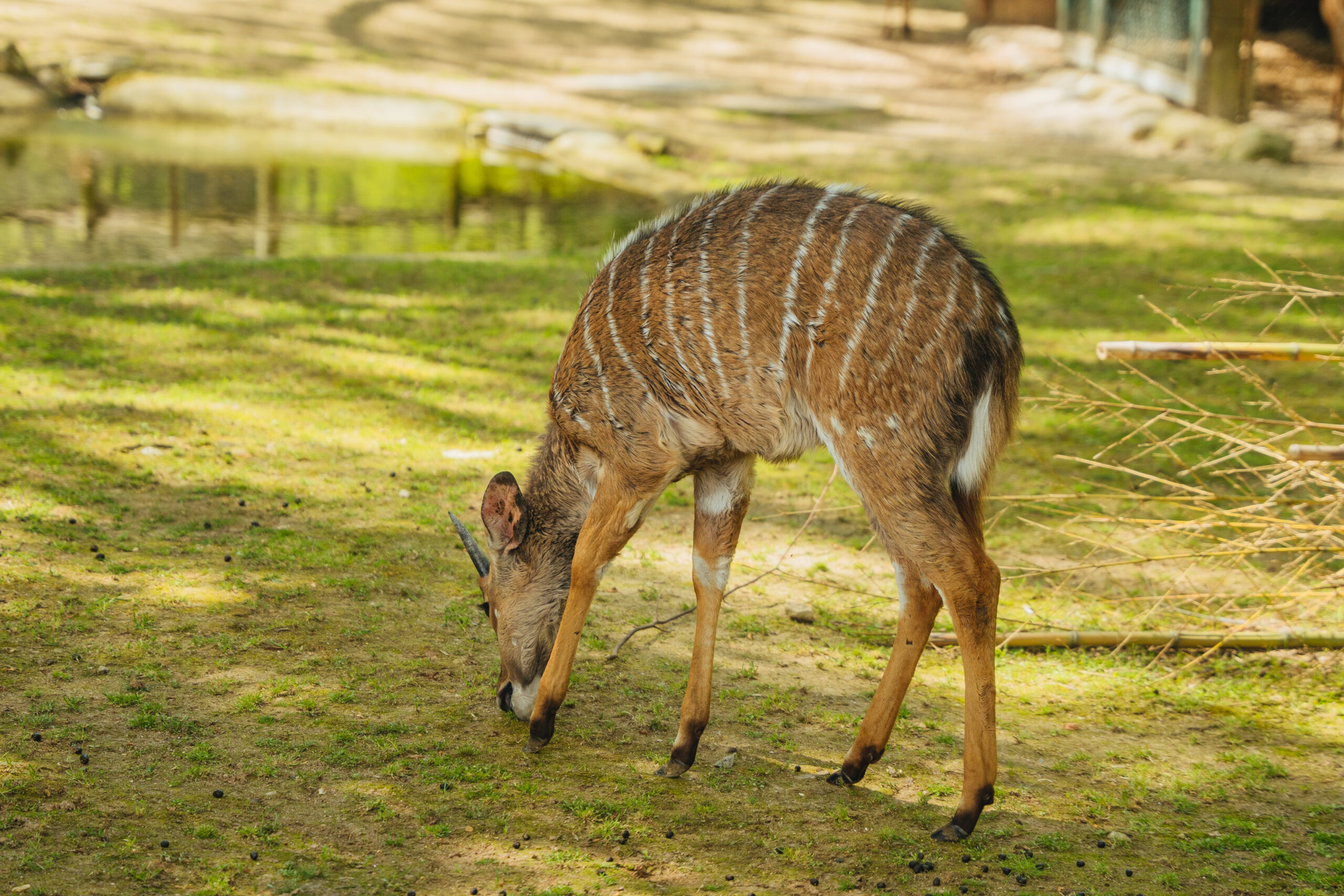In the past, the Nyala disappeared in some areas due to the loss of habitat for use in agriculture. Currently, its population is stable and there are an estimated 20000-27500 mature animals. About 80% of the total population lives in protected areas and there are no major threats to the populations of this species. Recently, in some areas, their habitat has been improved through human activities, such as the abandonment of some fields and the consequent invasion of many grasses that serve as food for the Nyalas. In Swaziland, more than 1000 animals of this species have been introduced.
